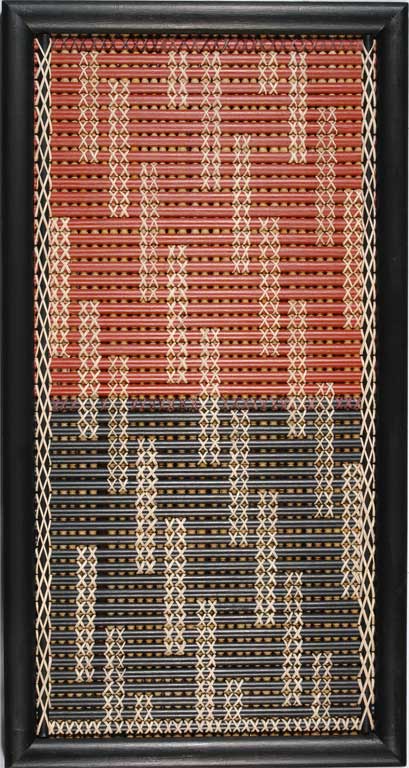Four panels show variations of the roimata (tears) pattern, based on vertically stitched rows, frequently in pairs, that are separated in the same number of non-stitched rows. An Arawa design known as roimata toroa (albatross tears) has alternate parallel rows in vertical blocks, while in a similar Whanganui design was shown as tuturu (leaking water) or turuturu (falling raindrops).
In the Ngāti Porou story of how the kumara came to New Zealand, the ancestor Pourangahua left his wife on the East Coast when he returned to Hawaiki to obtain the tubers. There, his tohunga Ruakapanga not only gave him baskets containing the kumara tubers but also two sacred birds, to help him return. He instructed Pourangahua that he must give prayers of thanksgiving on his safe arrival back in New Zealand, as well as prayers for the safe return of the sacred birds back to Hawaiki, and for a bountiful kumara harvest. However, in his joy at being reunited with his beautiful wife, Pouranahua forgot his instructions. Later, he found the albatross birds weeping, their tears falling onto their breasts. One had been crying so long that its tears were just dripping, short tears. The other cried long tears - roimata toroa. Accordingly, for Ngāti Porou, the roimata turuturu design shows long and short tears.
This page reproduces information from page 28 of the booklet Pūawaitanga o te Ringa - Fruits of our busy hands
These panels are on display at Waruwarutū, Tuakiri | Identity, Level 2, Tūranga.




